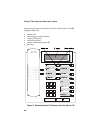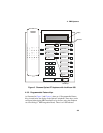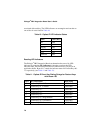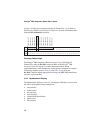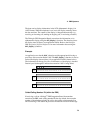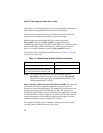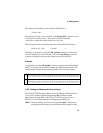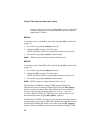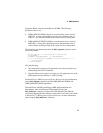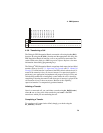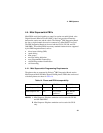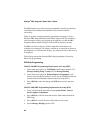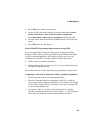Dialogic
®
PBX Integration Board User’s Guide
messages. However, you can use the dx_dial( ) function as described
so that your application will maintain functionality across different
manufacturers’ switches.
MWI On
A technique to turn on the MWI in this switch, using dx_dial( ) with the dial
string, is to:
1. Go off-hook using the dx_sethook( ) function.
2. Call the dx_dial( ) function. The dial string is
<ESCO><extension><ESCO> (optional pause character may be used).
3. Go on-hook using the dx_sethook( ) function again.
NOTE: <ESCO> means the Escape character followed by O.
MWI Off
A technique to turn off the MWI in this switch, using dx_dial( ) with the dial
string, is to:
1. Go off-hook using the dx_sethook( ) function.
2. Call the dx_dial( ) function. The dial string is
<ESCF><extension><ESCF> (optional pause character may be used).
3. Go on-hook using the dx_sethook( ) function again.
NOTE: <ESCF> means the Escape character followed by F.
With the Hicom 150 PBX, the Dialogic
®
PBX Integration Board can
determine the state of its Message Waiting display using the d42_display( )
function to retrieve the display data. Bytes 00 through 47 are used for the
message waiting prompt and displays Messages received: 1 and View
messages? Refer to the Dialogic
®
PBX Integration Software Reference for
more information about using the d42_display( ) function.
With the Hicom 150 PBX, since there is no button that can be programmed to
store the feature access code for MWI OFF operation, the application must set
the MWI ON and MWI OFF feature access codes using the d42_setparm( )
function. Otherwise, MWI operation can not be done by the Dialogic
®
PBX
76



